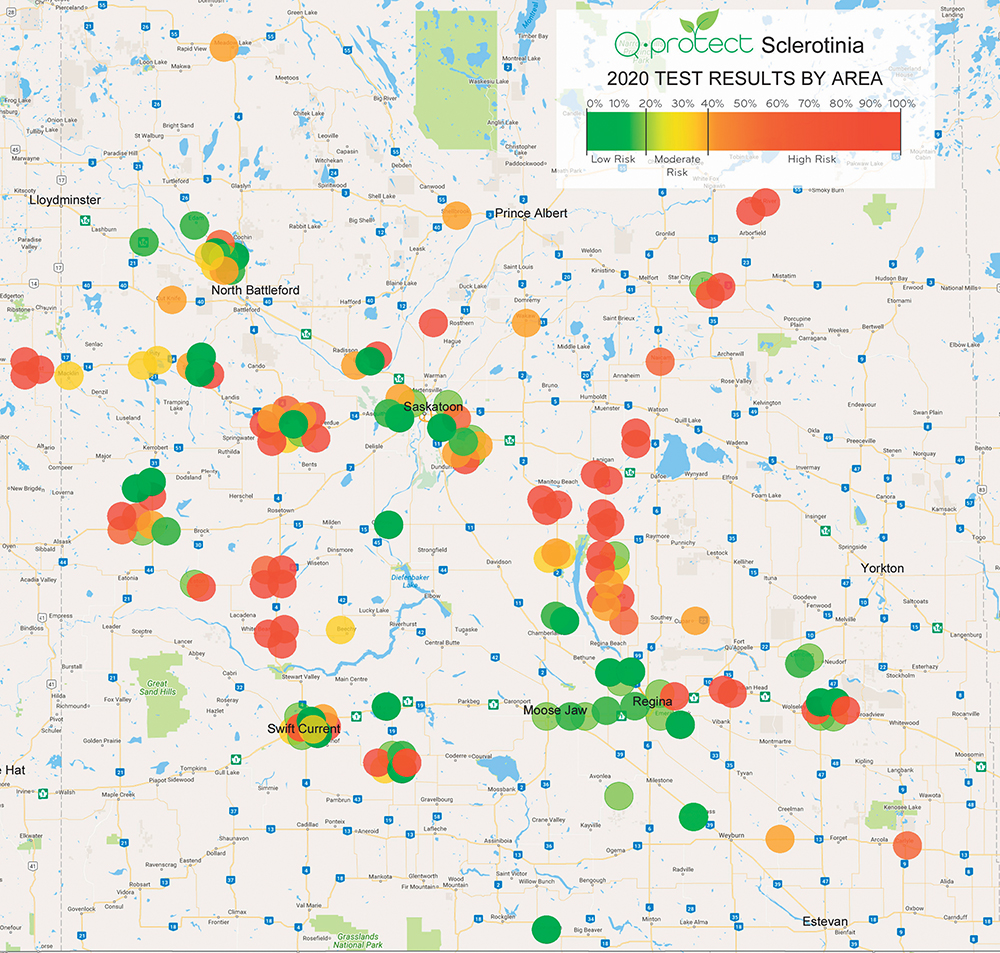A genetics lab provides a sclerotinia test called Q-protect that helps growers decide when and if to apply a fungicide
Sclerotinia disease in canola thrives in years with high precipitation and humidity, which means wide swaths of the Prairies are at high risk this year.
“Even this year with everything being so wet it’s still surprising to see the variation in the province (Saskatchewan) of zero all the way up to 100. It shows how aggressive and unpredictable sclerotinia is,” said Heather Deobald of Quantum Genetix.
Quantum Genetix is a Saskatoon-based genetics lab that provides a sclerotinia test called Q-protect that helps growers decide when and if to apply a fungicide.
Read Also

Growing garlic by the thousands in Manitoba
Grower holds a planting party day every fall as a crowd gathers to help put 28,000 plants, and sometimes more, into theground
Growers receive results from the test within 24 hours on the company’s app.
Quantum Genetix just released a results map for the tests they’ve conducted this year.
“We didn’t see much of a spore presence until after July 2 this year. Sometime we will see it a little earlier, like by the end of June,” Deobald said.
“Depending on the area, we saw a fluctuation from low risk to high risk in the first two weeks of July. But then even within those same geography we had some very different results.”
For instance in the Saskatoon area some fields tested as having a high risk while others tested as a low risk even when tested at the same time.
Q-protects examines the amount of sclerotinia sports on canola petals, and assigns a risk level to the sample.
If results come back at 20 percent or lower, there is a low probability of developing sclerotinia disease that will contribute to a significant yield loss.
If the results are 40 percent or higher, there is a high probability of developing disease that will contribute to significant yield loss.
The Q-protect barometer was developed from multi-year field studies correlating presence of sclerotinia spores to future development of disease.
In the Q-protect app, producers can input the cost of spraying, selling price of canola and estimated yield to get a better understanding if it’s economically worthwhile to spray.
“After the third week (in July) we saw a trend of increasing spore presence. Even with all the moisture and high humidity in most areas we were still getting samples indicating low spore levels even though it was trending upward,” Deobald said.
“Overall, probably 30 percent of the fields we tested were at a low level, so a level low enough that fungicide application wouldn’t have been required at the time of testing. Which was a little bit surprising because in most of Western Canada it was pretty wet.”
She said more farmers this year had more than one test carried out on the same canola field to help find the optimal time to spray a fungicide, likely because weather conditions were conducive for sclerotinia.
“They would sample the same field maybe four or five days later, just to see if the levels had gone up. Especially if there had been a rain shower prior to testing or if they had done it earlier in flowering,” Deobald said.
She said farmers test at about 20 percent flowering and then again at 40 percent flowering so they can get a better understanding on how sclerotinia is spreading.
“In a significant number of cases, when the second test was done, the spore level had increased enough to bump it up into the next risk barometer,” Deobald said.


















